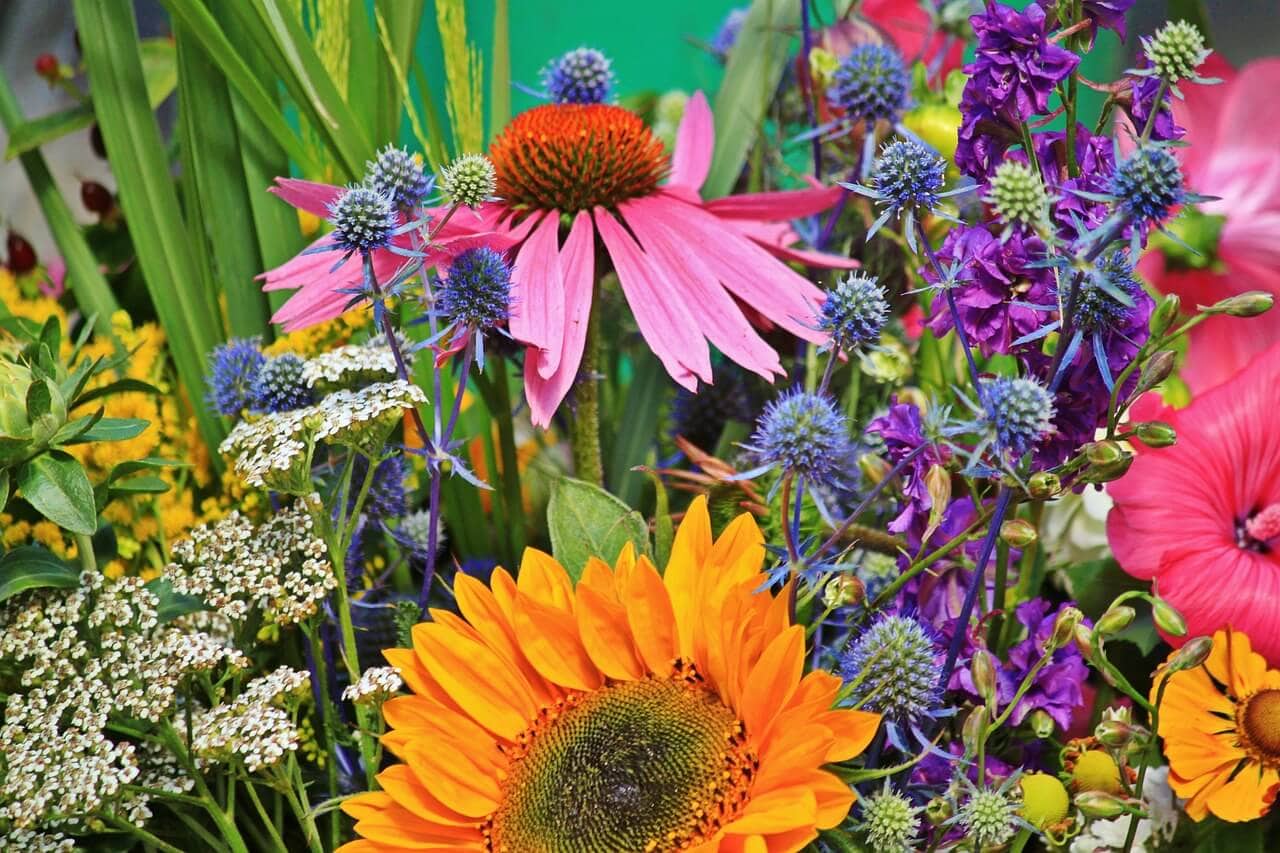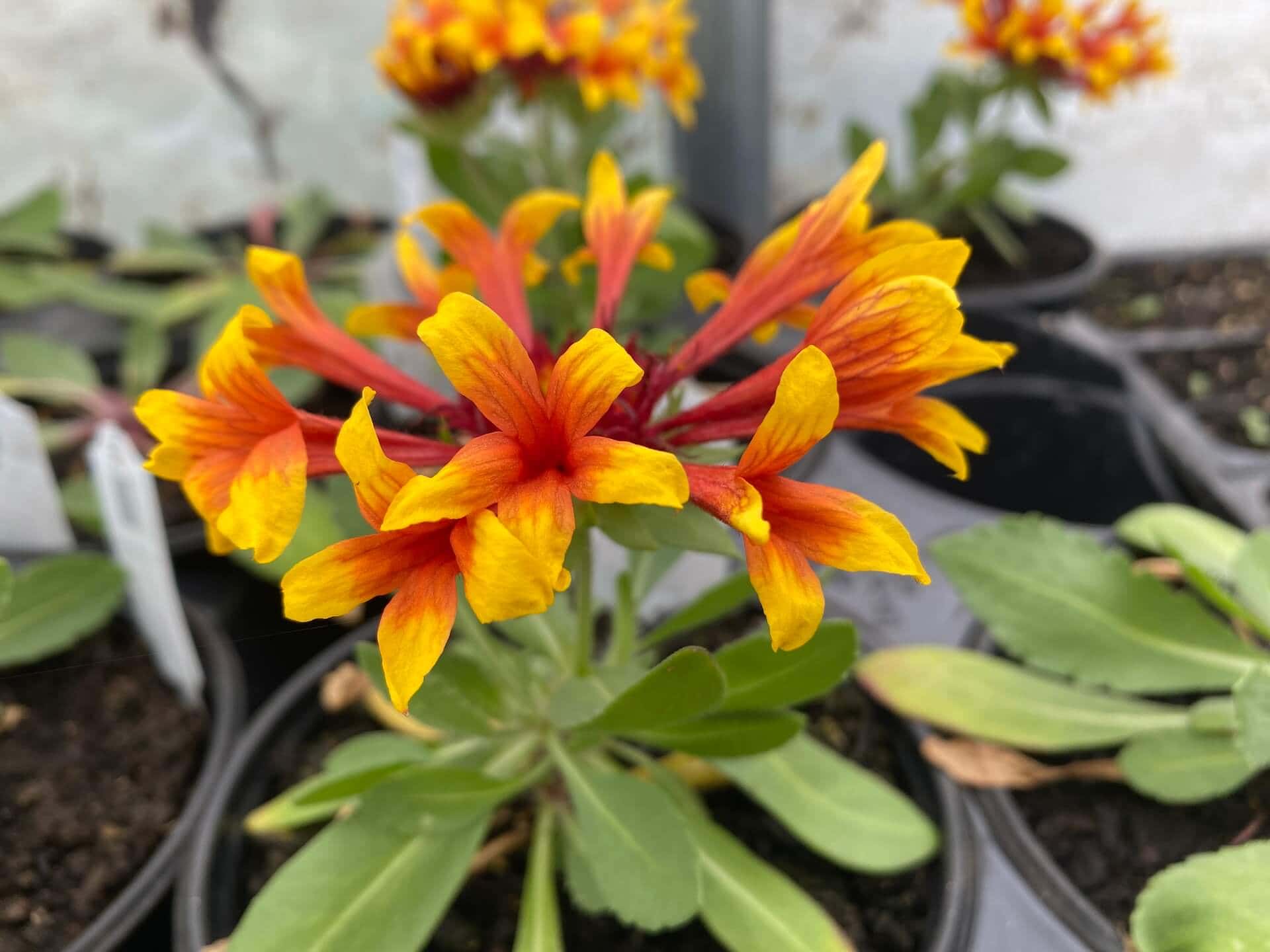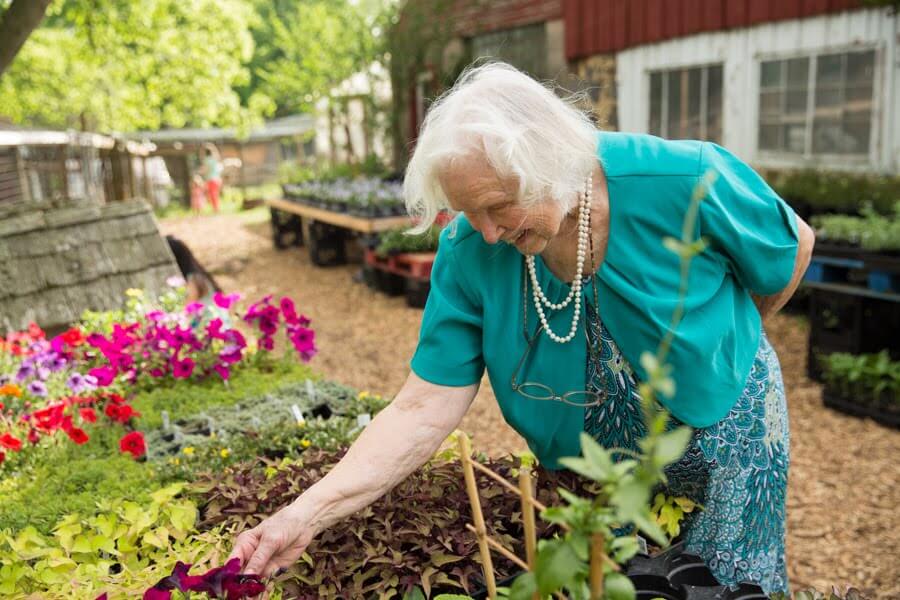This post may contain affiliate links. Probably doesn’t, but it might. It doesn’t cost you anything extra but if you use these links to buy something, we may earn a commission.
Is winter the time when you start pouring over seed and plant catalogs? Dreaming of those gorgeous flowers?
The coldest part of winter is when we start prepping plants for you. In February, we have thousands of baby plants that embody all of our gardening dreams. From flowers to vegetables to baby fig trees, the young plants are all there. You have been telling us you want some more interesting perennials, and here they come!
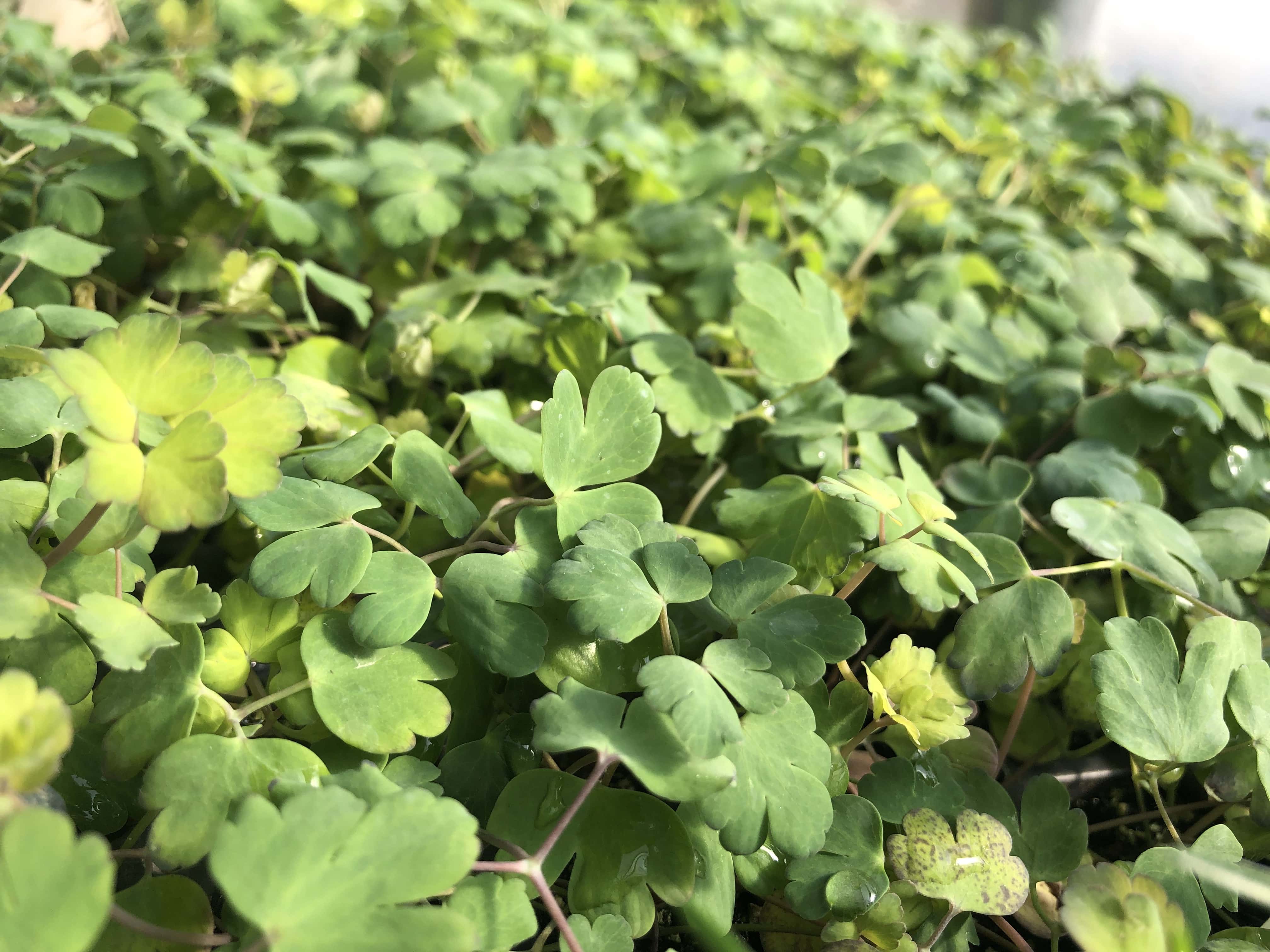
Table of Contents
Native Perennials
We have a lot of native perennials for you to consider. The many virtues of native perennials include being hardy, disease-resistant, insect-resistant, deer-resistant, and beneficial to the pollinators and habitat of our growing area. They thrive in a variety of conditions and are an essential part of the ecosystem.
This first group of perennials will be available starting in the middle to end of April, depending on the weather. Even though they are perennials and hardy once they are grown, at this point they are still pampered young plants that have been living the good life in a heated, protected environment. We want them to be large enough and for the weather to be moderate enough so that the young plants grow well in your garden.
Smaller perennial plants can save you money
As you already know, plants grow! April is your opportunity to save 30% on the full-size pot by getting your perennials early. These are in generously-sized quart containers and all will bloom this year. At $7.99, you can stock up on more native perennials and fill out your garden.
The plants will be up-potted into gallon pots as they grow and then the price grows with them to $12.99.
Plant selection changes every week!
Here are the early plants that will be available starting mid-to-late-April 2023. While most are native perennials, I couldn’t leave out lavender, which is one of my favorites. At the end is the non-comprehensive list of what’s coming in May, and then a few more in June. There are always more plants!
Perennials ready to plant in our area in mid-April
Aster laevis ‘Woods Blue’ Aster
There are lots of aster varieties! Each has its own charm and characteristics: height, bloom time, color (variations from dark purple/blue to magenta pink), and sun/shade preferences. Very reliable and dependable. ‘Woods Blue’ has a low, rounded habit and thrives in half-shade to sunny areas. This variety has profuse blooms on a compact habit, about 12 inches high. The blue flowers have a bright gold center, and this variety has a longer bloom period than many varieties. It is a reliably hardy aster that is pollinator-friendly and deer resistant.
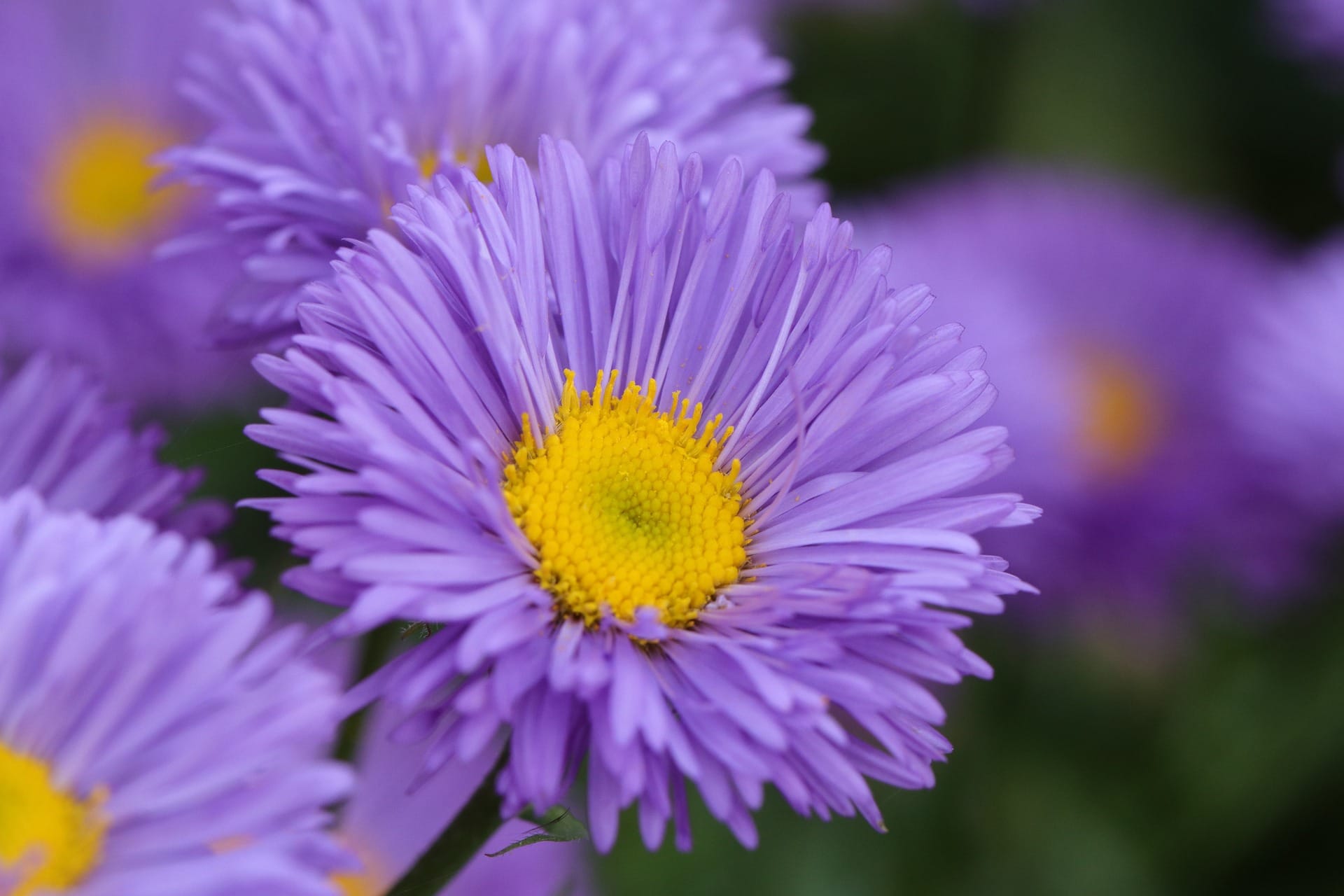
Astilbe spp., Astilbe ‘Erika’
Flexible in its sun requirements, Astilbe can be grown in full shade, half-shade, or even full sun. Our experience has been that the hot temperatures in the summer can overwhelm Astilbe and sunburn the leaves. In full shade, these plants will continue to bloom but the plants will not be as large. Half and half will give you the largest and most prolific blooms. The feathery plumes are a delight in shady corners of the garden. Each variety blooms at a slightly different time, with bloom time ranging from mid-spring to late summer. Astilbe multiplies slowly, so division every 4-5 years is sufficient to keep the plantings under control. Regular watering, particularly in the summer, helps the plants do well. ‘Erika’ has profuse light pink plumes.
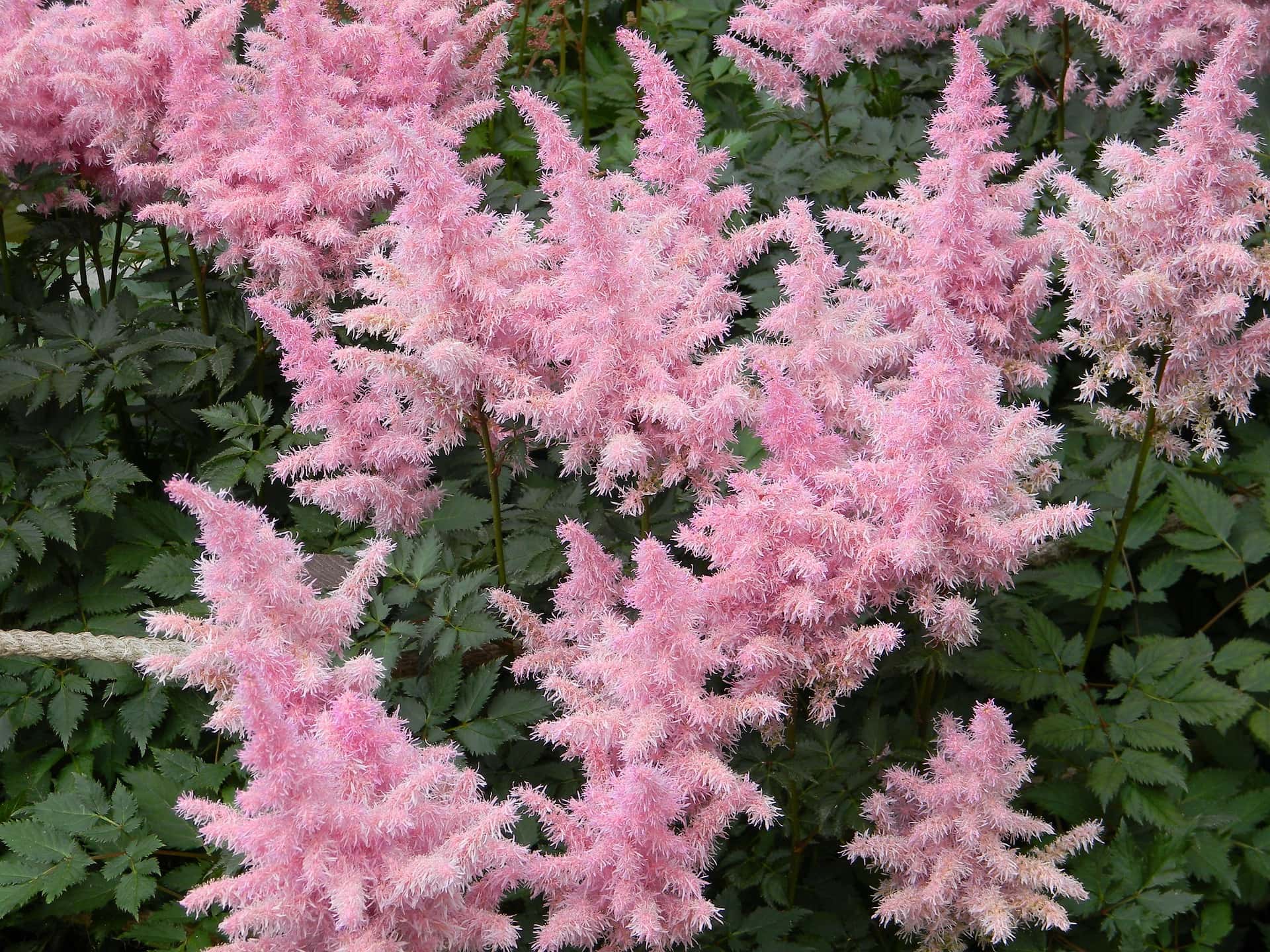
Dianthus carophyllus also known as Carnation, ‘Grenadin’
This is a wonderful hardy perennial for zones 4-10, which puts us right in the middles. The 2” flowers have a lovely clove fragrance and will hold up exceptionally well in cut flower bouquets. Red, pink, white, and yellow flowers will bloom in June and July. This is a sun loving and heat tolerant plant, so be sure to plant it where it gets the maximum amount of daylight hours.

Eupatorium dubium ‘Little Joe’
‘Little Joe’ Pye Weed has all the benefits of its larger sized sibling but in a more compact form. Very hardy, disease-resistant, attracts swallowtails and other butterflies and pollinators by the dozen, charming clusters of rose pink flowers from late July through September, ‘Little Joe’ is more compact at 3-4 feet tall, and spreading slowly to about 3 feet in diameter. This plant prefers regular water, loves to be near ponds or lakes, and thrives in full sun to half-sun conditions. Now taxonomically known as Eutrochium dubium, Joe Pye Weed is still called Eupatorium by gardeners. (Butterfly not included!)
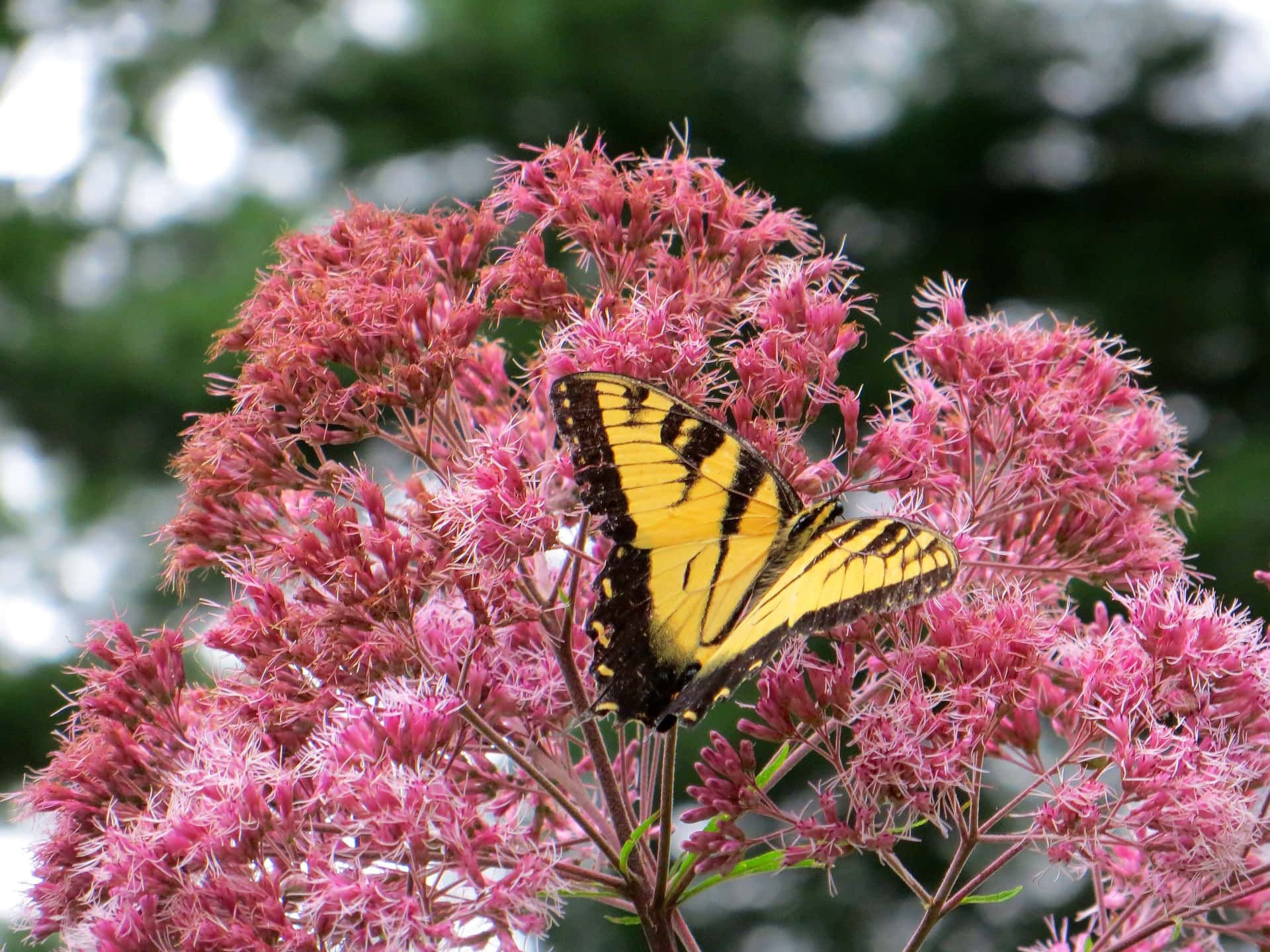
Geranium maculatum ‘Rozanne,’ Wild geranium or American Cranesbill
Happy in shady areas in zones 3-8, Wild Geranium is common in woodlands as a low-growing perennial. Its delicate lavender or pink flowers are very showy in the spring and early summer. This is a plant that will show heat stress and is best planted with late-blooming flowers that can cover the foliage later in the season. Cranesbill re-seeds well and can create an attractive groundcover. It is a pollinator favorite. ‘Rozanne’ has multitudes of beautiful blue-purple flowers which last from early summer through frost.

Heuchera, ‘Plum Pudding’
Dark purple leaves with silver marbling makes this perennial stand out in the shade. It has beautiful leaves as well as delicate spikes of pink flowers. The flower spikes hold up well in cut flower arrangements. ‘Plum Pudding’ is fast growing, will flower the first year, and has a tidy, mounding habit. This variety is more heat and humidity tolerant than others and thrives in full-shade to half-shade areas.

Lavandula Lavender
There are many varieties of lavender, but we have selected two varieties that can tolerate our hot, humid summers and survive our unpredictable winters: ‘Phenomenal’ and ‘Sensational.’ These are crosses between English and Spanish lavender parents. The leaves are very fragrant; zones 5-8 for these disease-resistant and hardy crosses. French lavender (zones 7-10) blooms nearly continuously all summer. English lavender produces the classic tight purple spikes and is hardy for zones 5-8. Spanish lavender is suited for hot, steamy climates, zones 8-10. ‘Phenomenal’ and ‘Sensational’ have long bloom periods, very fragrant flowers, and they are well suited to our hot summers.
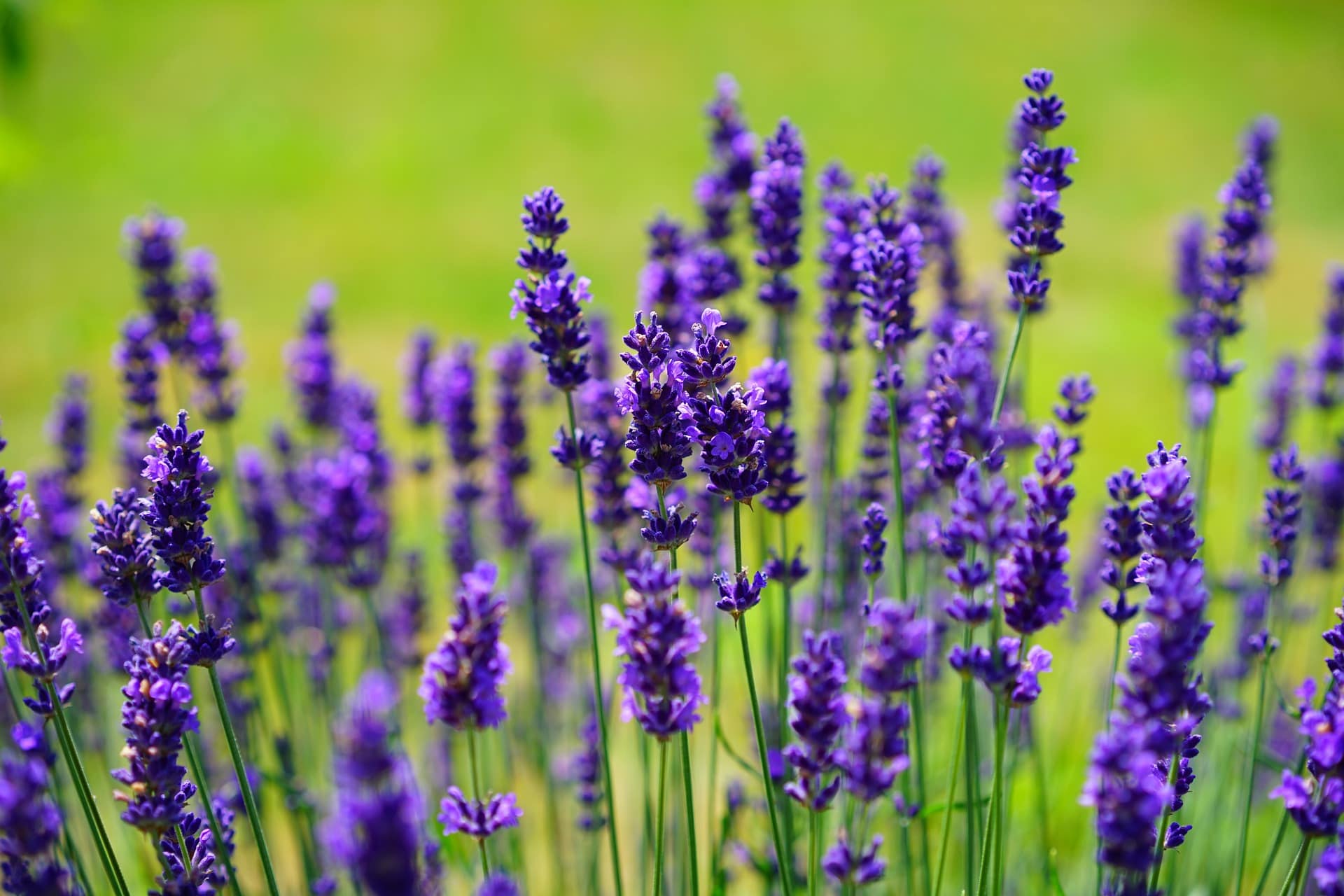
Liatris spicata is also known as Blazing Star or Gayfeather
We have two varieties, ‘Spicata’ and ‘Sp. Floristan Weiss.’ A magnet for butterflies, the feathery upright spikes of Liatris are excellent for cut flowers also. The purple spikes have a series of buds that open into airy lighter tassels. Pollinators love this plant, but deer do not. Does best with at least 3-4 hours of sun daily. It is heat, humidity, drought, and cold tolerant, but Gayfeather cannot tolerate wet in the winter. Good drainage is essential for your plants to survive. As a tall plant, 3-5 feet at maturity, Gayfeather is an attractive vertical element in the garden, blooming in July and August. It can serve as a winter bird feeder if you leave the stalks with dried flowers and seeds.
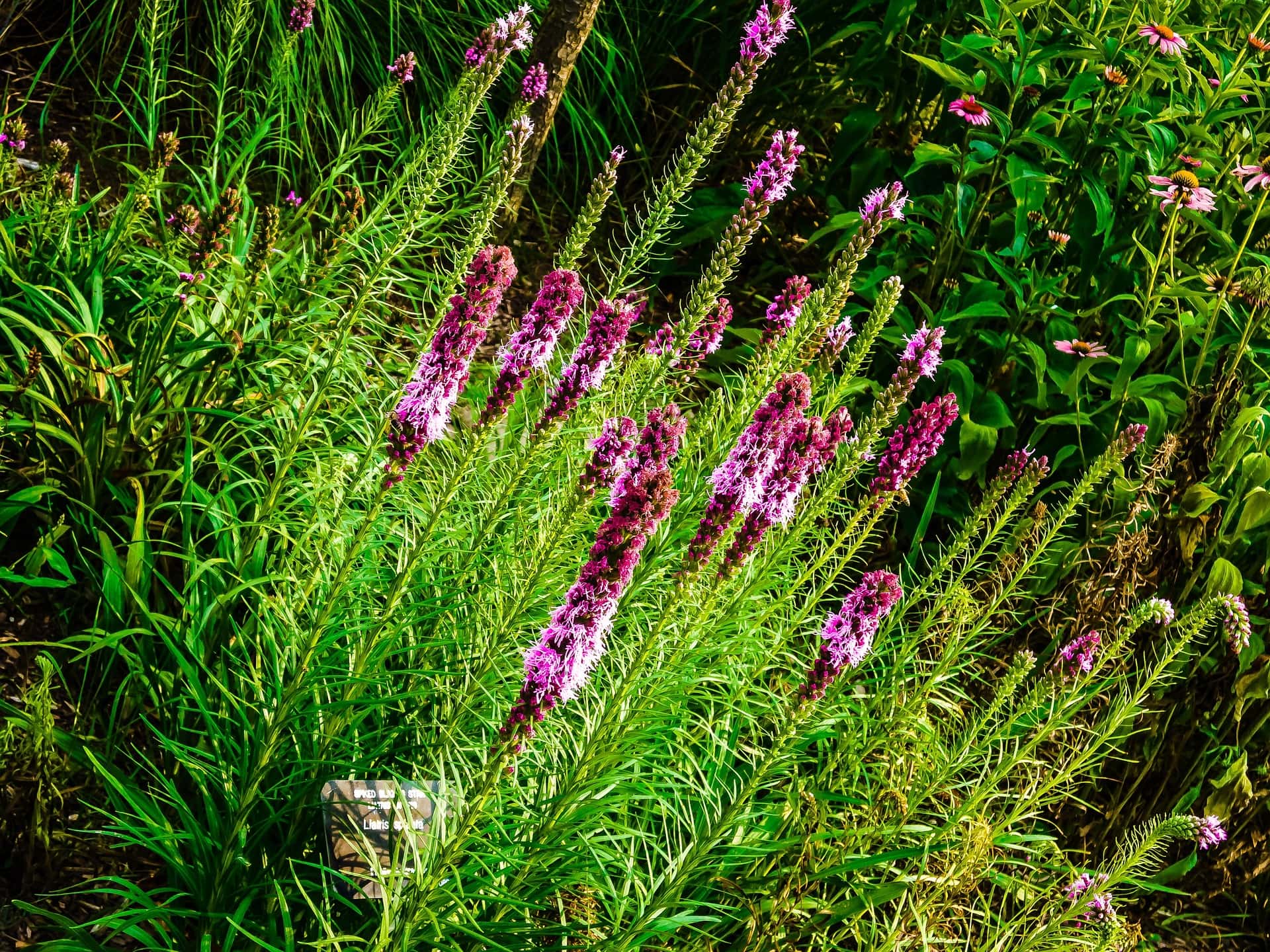
Monarda didyma ‘Jacob Cline,’ also known as Bee Balm
There are about 15 different types of Monarda and all are loved by bees, hummingbirds, and other pollinators. These varieties are hardy in zones 4-9. Monarda didyma is easily grown in full sun to partial shade. ‘Jacob Cline’ is the didyma variety most often grown due to its resistance to powdery mildew. The bright red flowers pop in the garden landscape.
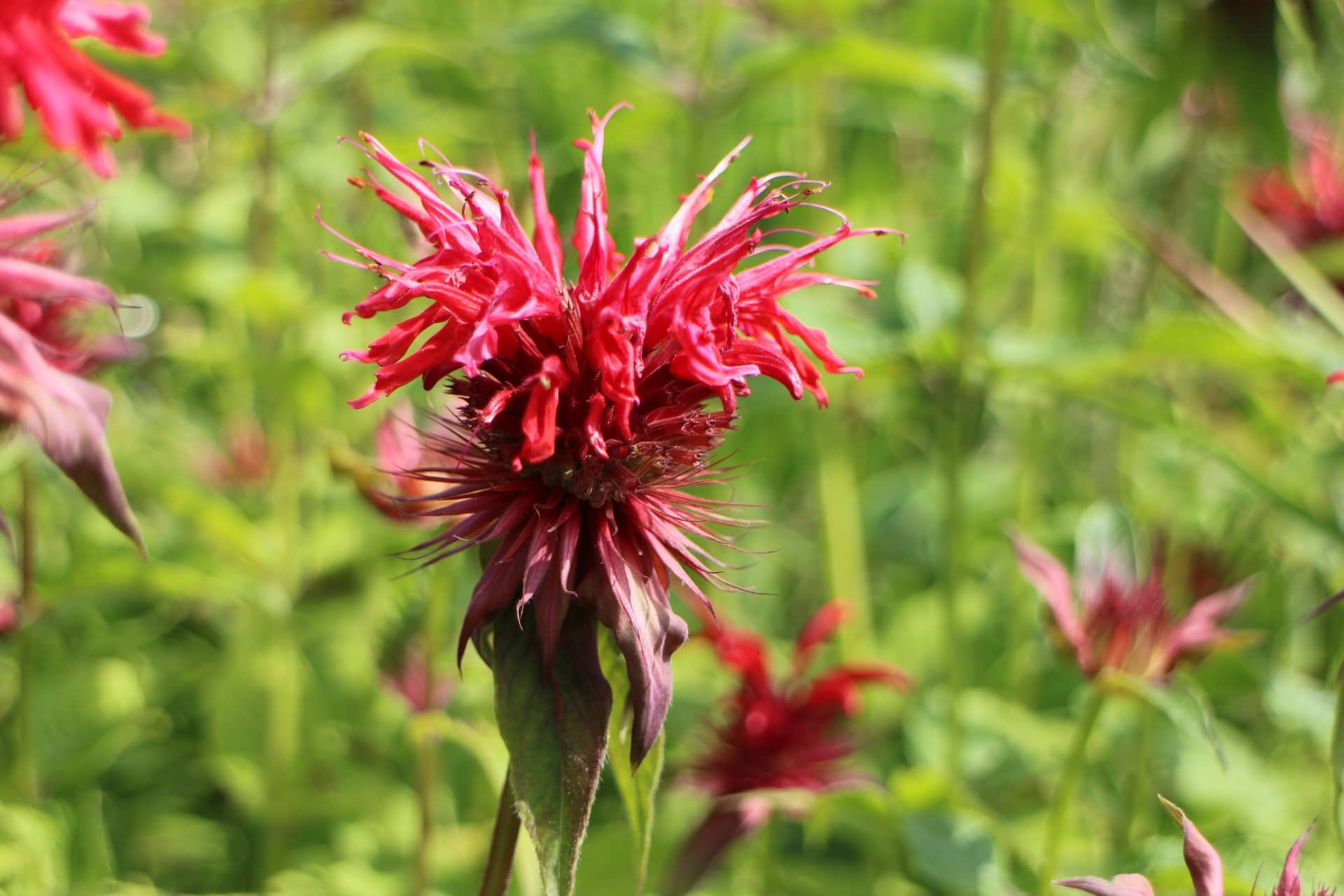
Nepeta ‘Junior Walker’ also known as Catmint
Catmint has beautiful blue flowers and aromatic blue-green foliage. This variety has a very tidy habit; ‘Junior Walker’ grows to about 12-18 inches tall and will cover about 2 feet. It does NOT re-seed, which keeps it from taking over. The compact size makes it a great border plant and it has a long bloom window of late May through September. Full sun to half-sun, deer resistant, very drought tolerant, works well in rock gardens and containers, ‘Junior Walker’ is also pollinator friendly.
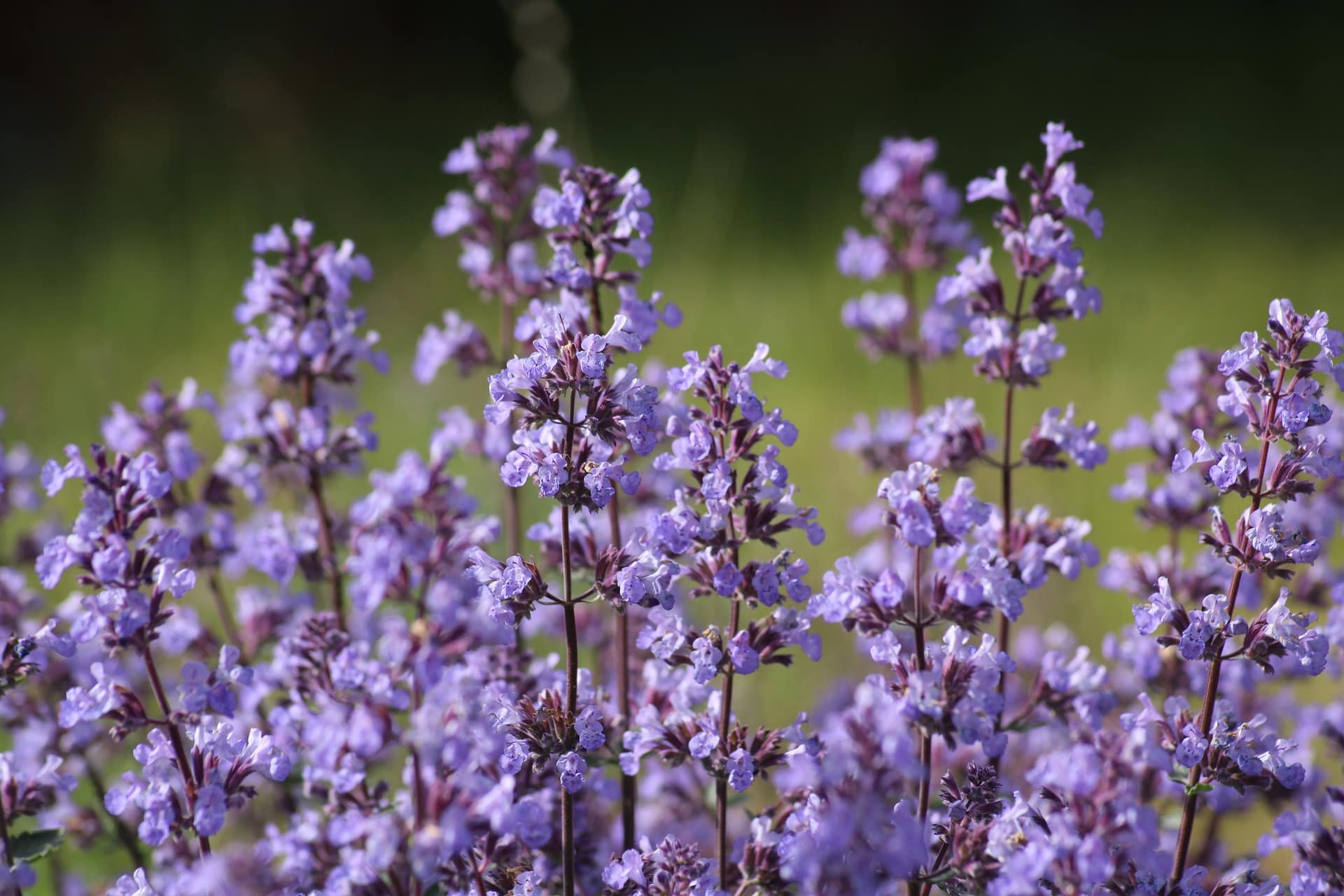
Phlox paniculata ‘Laura’
Phlox has long been a favorite for gardens in our area with good reason. There are many varieties, colors, and heights for Phlox, so check out all the details. ‘Laura’ is the earliest variety we will have, but fear not, we have four more varieties coming in May: ‘Blue Moon,’ ‘May Breeze’ (white), ‘Flame White Eye,’ and ‘Emerald Blue.’ ‘Laura’ grows to 24”-30” tall, has dark lavender flowers. This is a mildew resistant variety which is a big help in our humid summer weather. Phlox does best in full sun, is a hummingbird and butterfly favorite, and is deer resistant as well.
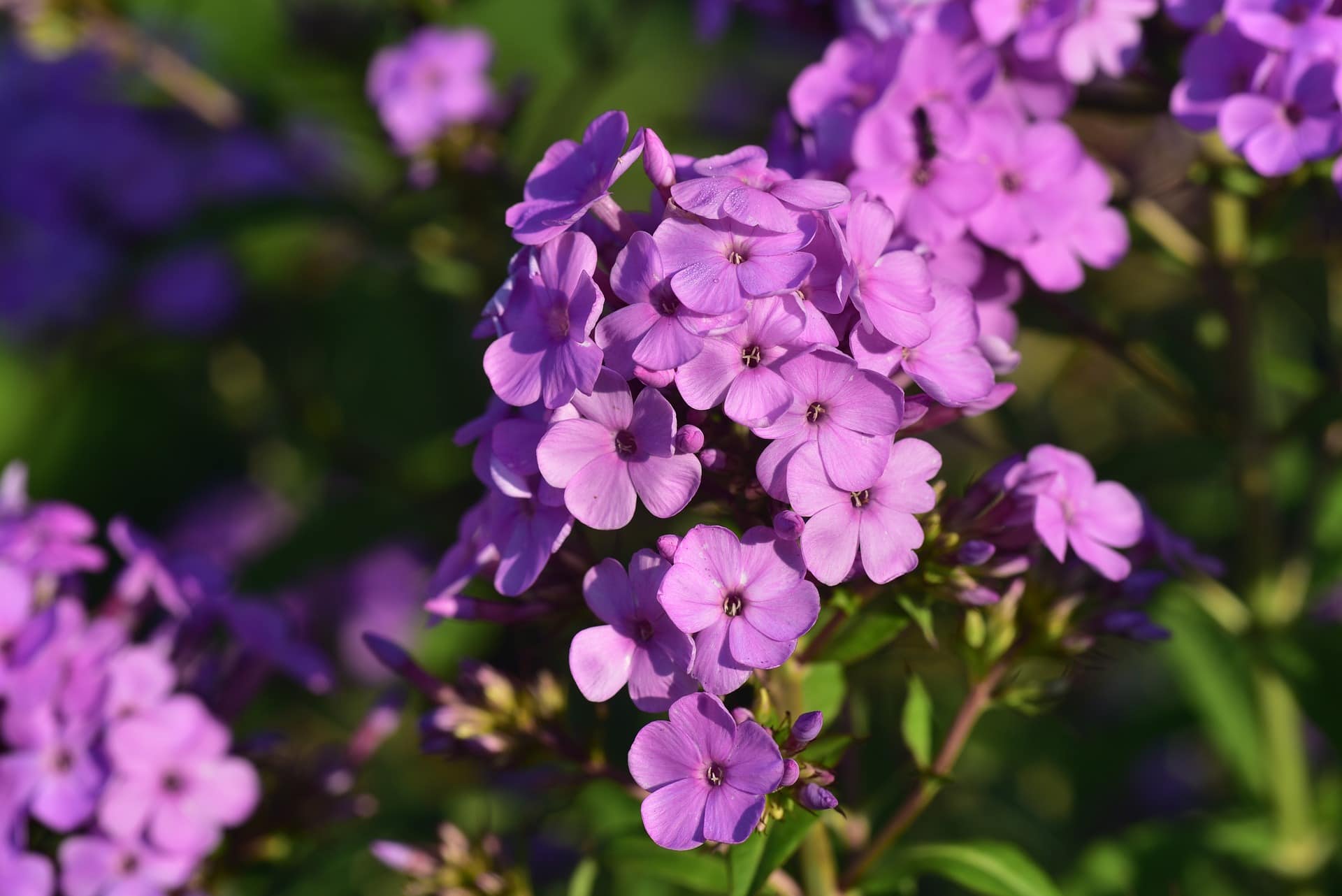
Salvia nemorosa ‘Blue Hill’ also known as Garden Sage
Garden Sage is a great hardy perennial, but ‘Blue Hill’ takes all that plus more vivid blue flowers. Insect and disease-resistant, drought-tolerant, heat and humidity-tolerant, deer resistant, attracts loads of pollinators, beautiful flowers for bouquets, hummingbirds love it, the leaves can be used to make a soothing salve—this plant has it all!

Sedum ternatum, Stonecrop ‘Lime Zinger’
There is a great variety of sedums, from low growing to upright, with different colored leaves, and leaf sizes. They look like members of the cactus family, but can be hardy perennials in zones 3-10, depending on the variety. This variety, Lime Zinger, has bright green leaves edged with red, as well as hot pink flower heads in the late summer/early fall. Sedum are very heat, sun, and drought tolerant, and are perfect for areas where you do not have easy water access. Although the leaves of sedum are usually the star attraction, ‘Lime Zinger’ produces a beautiful pink flower cluster for several weeks in the late summer.
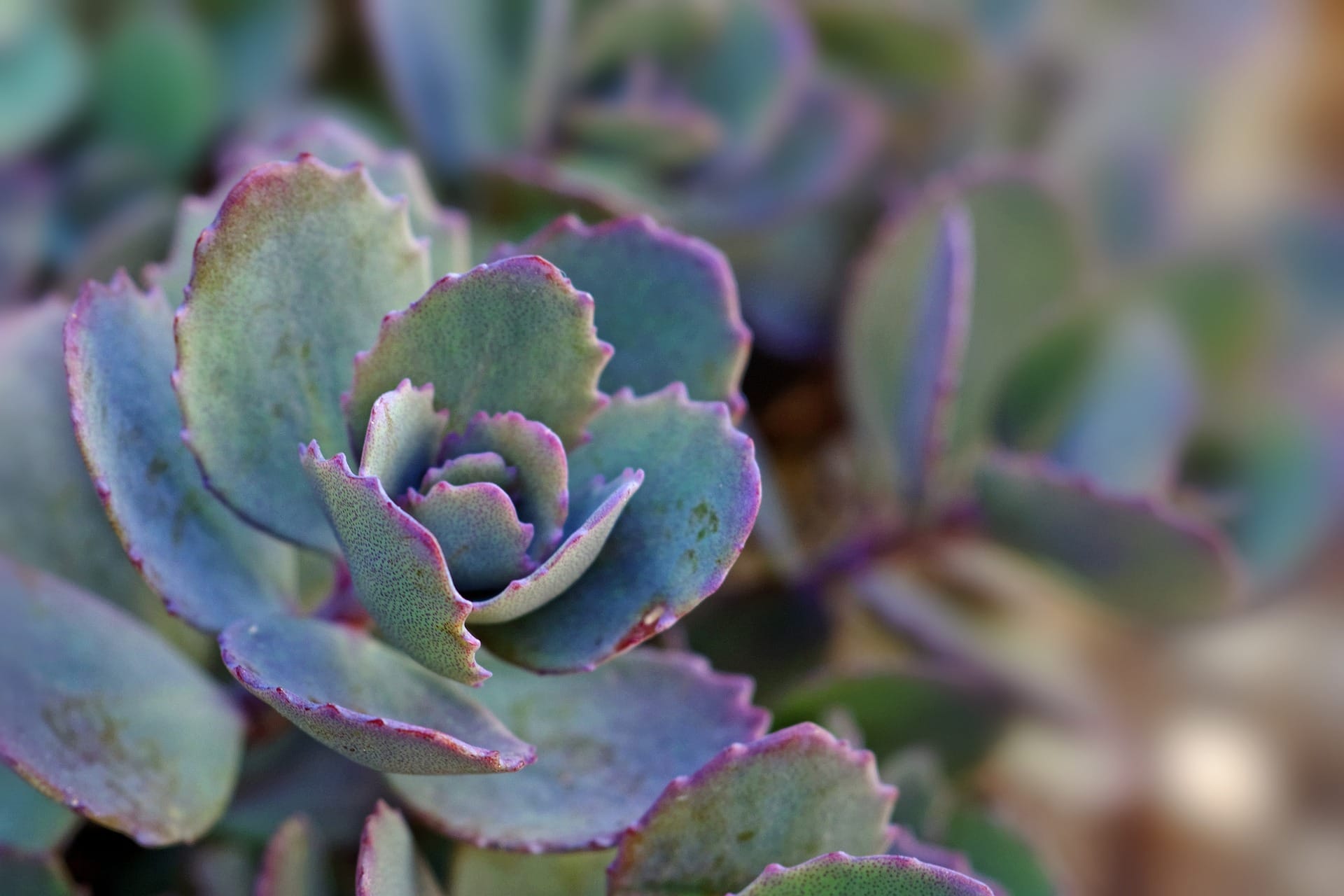
Solidago sphacelata, ‘Golden Fleece’ Goldenrod
Some varieties of Solidago are very aggressive in the habitat and can take over an area. ‘Golden Fleece’ has beautiful golden flowers that do well in bouquets as well as adding bright color in the garden, and it is modest in its spreading habit. The more flowers you cut, the longer the plants will produce. This is a favorite of monarch butterflies during the fall migration. ‘Golden Fleece’ grows to about 20” tall and will spread to about 36” wide over five years. It does best in full sun to half-sun conditions. Divide every three years.
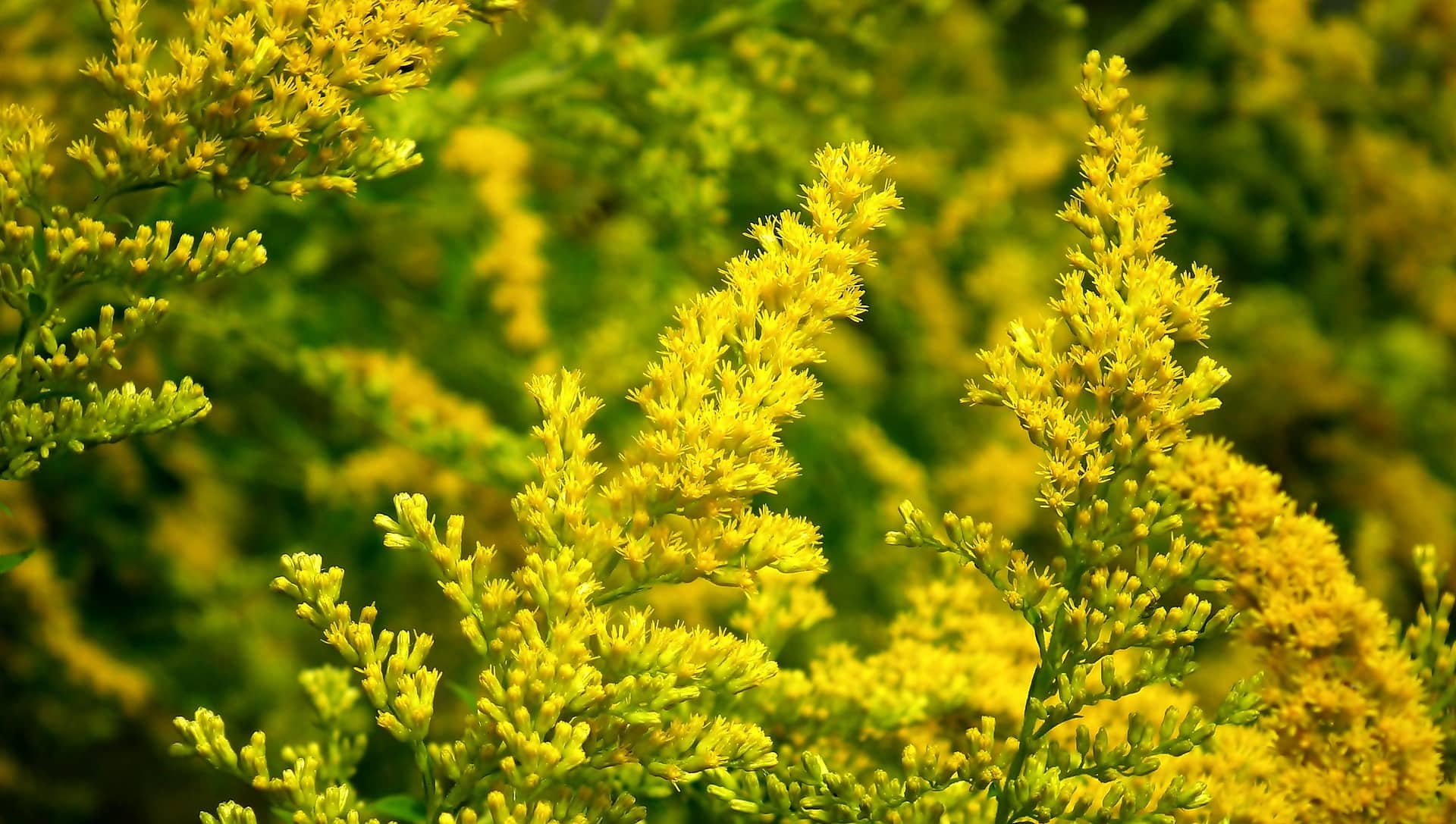
Tickseed Coreopsis ‘Crème Brulee’
There are many varieties of Coreopsis! We selected ‘Crème Brulee’ for its lush foliage and larger flowers which fill in along the stem. The overall appearance is more dramatic and fuller. The bright yellow flowers bloom all summer and into the fall. Cutting the flowers for bouquets helps promote new growth. Drought tolerant once established and very pollinator friendly.

It’s not too early for some vegetables and herbs in April
Also available in April will be lots of vegetable starts, including lettuce, spinach, kale, chard, cucumbers, beans, parsley, thyme, cilantro, rosemary, lavender, oregano, sage, and mint. Maybe tomato plants, depending on the weather. Maybe. Seeds for lots of vegetables are available now in the market.
By the way, the number one reason people don’t succeed with basil? They put the plants out too soon. Basil likes warm soil and hot air, so wait till mid-May to put basil out.
And more will be available in May!
Perennials available starting in May: Leucanthemum, Phlox, Asclepias, Coreopsis, Echinacea, Lobelia, Astilbe, Dicentra, Hosta, Fern, Amsonia, Heuchera, Lobelia, Penstemon, Sedum, and Calamagrostis. These will be a mix of quart and gallon sized pots.
Plus lots of annual bedding plants like geraniums, impatiens, begonias, lobelia, petunias, coleus, and more.
To feed the belly and not just the soul, we’ll also have lots of herbs, tomato, and pepper plants! And fig trees and rhubarb.
And finally, a few more perennials that will be ready in June:
Liatris, Asclepias, Aster, Eupatorium, Heliopsis, and Caryopteris.
A descriptive list with pictures and planting preferences for the May and June perennials is coming.
Remember, the April perennials will be $7.99 initially. As they grow, we will up-pot them into gallon containers, and the price will increase. So if you want the $7.99 ones, act fast (up-potting of April’s plants will likely happen in the middle of May, but it could be earlier or later depending on how fast the plants grow). May’s new perennials will be a mix of $7.99 and $12.99 plants.
Happy growing!
~Ruth
About Highland Orchards: Completely surrounded by suburbia, our small farm has been growing beyond expectations since 1832 in this location.
Growing a wide variety of fruits, vegetables, and flowers, Highland Orchards provides true “farm fresh” for the community all year. If you want to shake the hand of the farmer who grows for you, here is the farm! With plants in the ground or under cover in tunnels, we grow for every season. A family farm, we have three different generations involved in running the farm right now.
Come see us to eat fresh, eat local, and eat well!
About Ruth: I am the 6th generation of my family to farm here at Highland Orchards in Delaware. I grew up here, learning from my grandparents and parents how to plant, weed, harvest, and store fruits, vegetables, and flowers. My graduate degree is in history, so I love to research anything and everything. I have taught at all levels, including university and continuing education. I have done everything on the farm from planting to harvest to selling to social media. I love that I can share knowledge with people through books, blogs, and courses.
